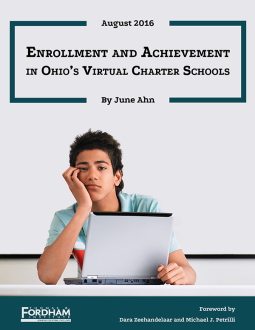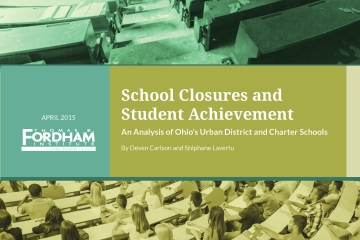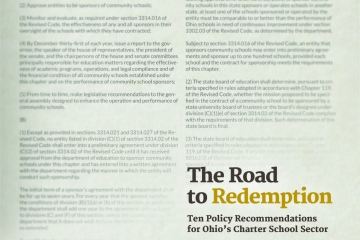This Fordham study, conducted by learning technology researcher June Ahn from NYU, dives into one of the most promising—and contentious—issues in education today: virtual schools. What type of students choose them? Which online courses do students take? Do virtual schools lead to improved outcomes for kids?
With over thirty-five thousand students enrolled in its fully online charter schools (“e-schools”), Ohio boasts one of the country’s largest populations of full-time virtual students. The sector has also grown tremendously, with a 60 percent increase in enrollment over the past four years—more than any other type of public school. Using four years of comprehensive student-level data to examine Ohio’s e-schools, the study finds:
- E-school students are mostly similar in race and ethnicity to students in brick-and-mortar district schools. But e-school students are lower-achieving (and more likely to have repeated the prior grade), more likely to participate in the federal free and reduced-price lunch program, and less likely to participate in gifted education.
- Students taking online math courses are more likely to enroll in basic classes relative to students taking face-to-face courses. Almost no students take advanced math courses (like AP Statistics, Calculus, or Algebra II) online, especially compared to students who take face-to-face classes.
- Across all grades and subjects, students who attend e-schools perform worse on state tests than otherwise-similar students who attend brick-and-mortar district schools, even accounting for prior achievement. In contrast, students in grades 4–8 who attend brick-and-mortar charter schools perform slightly better than their district school counterparts in both reading and math. Results are mixed but modest for students in grade ten.
- Findings also suggest that e-schools drag down the performance of the entire charter sector.
Online schools offer an efficient way to diversify—and even democratize—education in a connected world. Yet they have received negative, but well-deserved, attention concerning their poor academic performance, attrition rates, and ill capacity to educate the types of students who enroll in them. This is especially true in Ohio, where virtual schools have failed (as yet) to realize their potential.
Using a slightly different analytical approach than CREDO’s Online Charter School Study (2015), Dr. Ahn’s results corroborate the disappointing findings on Ohio’s online schools. Bold changes in policy and practice are needed to ensure that these schools better serve their students. For advocates of online learning and educational choice, the work has just begun.




